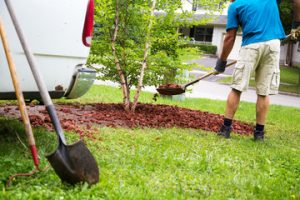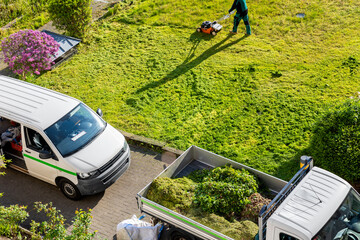A beautifully designed outdoor space has the power to transform the way homeowners enjoy their properties. From enhancing curb appeal to creating comfortable areas for relaxation, customized landscaping services play a vital role in shaping outdoor environments that reflect personal style and meet everyday needs. Unlike generic landscaping options, customized services are tailored to each property’s unique layout, aesthetic preferences, and functional requirements. This personalized approach creates outdoor spaces that are not only visually stunning but also practical and long-lasting. Whether a homeowner dreams of a tranquil garden, an entertainment-ready patio, or a complete outdoor living space, customized Landscape Designers Honolulu HI offers the solutions needed to elevate the entire outdoor experience.

The foundation of customized landscaping begins with understanding the homeowner’s vision. Every property is different, and each homeowner has distinct ideas about how they want their outdoor area to look and feel. Some may want a lush garden filled with vibrant plants and flowers, while others might prioritize a low-maintenance layout with clean lines, durable hardscapes, and organized greenery. Customized landscaping services take all of these preferences into account, allowing for a tailored design that suits the homeowner’s lifestyle and complements the architecture of the home. By focusing on personalization from the beginning, landscapers are able to craft outdoor environments that feel cohesive, inviting, and genuinely unique.
One of the biggest advantages of customized landscaping is the ability to blend functionality with aesthetics. Many homeowners desire outdoor spaces that serve multiple purposes—spaces for entertaining, relaxing, gardening, playing, or enjoying nature. Customized landscaping incorporates these functional needs into the overall design to maximize usability. For example, a homeowner who enjoys hosting gatherings may choose features such as a spacious patio, built-in seating, or an outdoor kitchen. Someone who values peace might prefer a secluded garden with water features, walking paths, and comfortable seating. Customized landscaping ensures that every feature supports the homeowner’s intended use of the space.
Hardscaping is a major element of many customized landscaping projects. This includes structures such as patios, walkways, retaining walls, driveways, outdoor kitchens, and fire pits. Hardscapes form the structural backbone of outdoor spaces, defining areas, improving access, and enhancing the property’s overall layout. Customized hardscaping allows homeowners to choose materials, colors, shapes, and patterns that match their style preferences. Whether they prefer natural stone, pavers, brick, or concrete, homeowners can create outdoor surfaces that are both durable and visually appealing. Custom hardscape can also be designed to match existing architectural features, helping the landscape blend seamlessly with the home’s exterior.
Softscaping is equally important in creating a cohesive and beautiful outdoor environment. Customized landscaping services often include the selection and placement of plants, trees, shrubs, and flowers that complement the climate, soil conditions, and overall design. Homeowners can choose plants that align with their desired aesthetic—whether they prefer a modern, minimalist look or a lush, colorful garden. Thoughtful plant selection also ensures long-term sustainability, as landscapers will recommend species that thrive in the local environment and require an appropriate level of care. This personalized plant selection helps ensure that the landscape remains vibrant and healthy throughout the year.
Modern outdoor lighting is another powerful tool in customized landscaping. Lighting plays a major role in transforming the atmosphere of a property after the sun goes down. It enhances safety by illuminating walkways and entrances while highlighting architectural and landscape features. Customized lighting solutions allow homeowners to choose lighting styles that fit their aesthetic—such as soft, ambient lighting for cozy evenings or brighter, more dramatic lighting to highlight water features, trees, or garden beds. Energy-efficient lighting options, such as LED fixtures, are often recommended to reduce electricity use and maintenance requirements.
Water features are popular additions in customized landscaping because they add tranquility, movement, and visual interest. Fountains, ponds, waterfalls, and stream-like elements can be tailored to fit the layout and theme of the landscape. Whether homeowners want a modern water wall, a natural-looking pond, or a small bubbling fountain near a seating area, customized landscaping services provide the expertise needed to design and install these features safely and effectively. Water features also create soothing sounds, making outdoor spaces more relaxing and inviting.
Customized landscaping services can also include the construction of outdoor living spaces, which have become increasingly popular in recent years. Outdoor living areas function as extensions of the home, providing comfortable places to lounge, dine, and entertain. These spaces may include covered patios, pergolas, outdoor kitchens, fire pits, or even full outdoor rooms with furniture and decor. Customized designs take into account the homeowner’s lifestyle, whether they prefer intimate spaces for quiet evenings or expansive layouts designed for large gatherings. With careful planning, outdoor living spaces can be both beautiful and functional, greatly enhancing the value and enjoyment of the property.
Sustainability is a key consideration in many modern landscaping projects, and customized services make it easy to integrate eco-friendly solutions. Homeowners can choose drought-resistant plants, energy-efficient lighting, environmentally friendly materials, and water-saving irrigation systems. Customized landscaping also allows for the inclusion of rain gardens, permeable pavers, composting areas, and native plant selections that support local ecosystems. Sustainable features not only reduce environmental impact but also lower maintenance costs and contribute to a healthier, more resilient landscape.
Irrigation is another essential component that can be customized to support the specific needs of the landscape. Proper watering is critical for the health of lawns, plants, and trees. Customized irrigation systems ensure that each area of the property receives the appropriate amount of moisture without waste. Advanced irrigation systems may include timers, drip lines, moisture sensors, and zoning features that tailor water distribution to different parts of the landscape. These systems promote water efficiency, reduce utility costs, and help maintain the long-term health of the outdoor environment.
Seasonal landscaping services are an important part of maintaining a customized outdoor space. Landscapes naturally change throughout the year, and ongoing maintenance helps preserve their beauty. Seasonal services may include pruning, mulching, planting, fertilizing, and cleanup. Customized maintenance plans ensure that each part of the landscape receives targeted care based on the season and its specific needs. This helps prevent damage, supports growth cycles, and keeps the outdoor space looking attractive year-round.
One of the most valuable aspects of customized landscaping services is the expert guidance provided by professionals throughout the entire process. From initial design consultations to ongoing maintenance, landscape experts work closely with homeowners to bring their vision to life. They offer insight into the best layout, materials, plants, and features for the property, ensuring that every detail supports the homeowner’s goals. This collaborative approach creates a landscape that feels truly personal and thoughtfully designed.
Safety and long-term durability are also major priorities in customized landscaping. Professionals ensure that all structures are installed correctly, drainage systems are properly configured, and materials are chosen to withstand weather conditions. Proper grading prevents water from pooling, while well-placed retaining walls help manage slopes and erosion. Customized designs take all of these practical concerns into account, creating landscapes that are not only beautiful but also safe and long-lasting.
The value of a customized landscape extends far beyond aesthetics. Well-designed outdoor spaces can significantly increase property value, making the home more appealing to potential buyers. Features such as outdoor kitchens, professional lighting, and high-quality hardscape often provide excellent returns on investment. Even simple upgrades, like refreshed plant beds or updated walkways, can dramatically improve the overall appearance of the property. Customized landscaping allows homeowners to prioritize upgrades that align with their goals, whether they are focused on resale value or long-term enjoyment.
For homeowners, upgraded outdoor spaces offer countless benefits. A customized landscape creates opportunities for outdoor living, relaxation, social gatherings, and spending more time in nature. These environments promote well-being, reduce stress, and encourage healthier lifestyles by providing inviting places to enjoy fresh air and sunshine. Customized landscapes also make everyday activities more enjoyable, whether homeowners are dining outdoors, gardening, playing with children, or simply unwinding at the end of the day.
In the end, customized landscaping services provide a powerful way to upgrade a home’s outdoor experience. By tailoring every element—from plant selection to hardscape construction—professionals create outdoor spaces that truly reflect the homeowner’s personality, lifestyle, and vision. These personalized designs ensure that the yard is not only beautiful but also functional, sustainable, and enjoyable throughout the year.
With the support of skilled landscapers, homeowners can transform ordinary yards into extraordinary outdoor environments that enrich daily life and elevate the overall appeal of the property. Customized landscaping brings out the full potential of any outdoor space, offering comfort, beauty, and purpose in every corner. From peaceful retreats to bustling entertainment areas, customized landscaping services make it possible to create a backyard that feels like a natural extension of the home—inviting, inspiring, and perfectly tailored to the homeowner’s unique needs.
